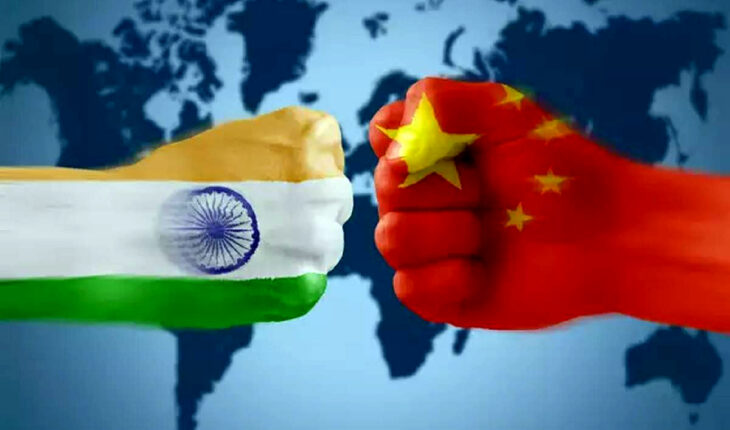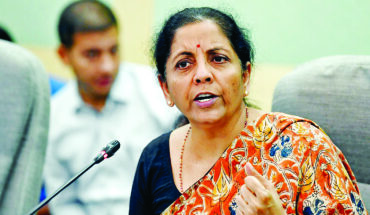Mukul Sanwal explores how two Asian giants can share prosperity and be independent of each other
In late January, External Affairs Minister S. Jaishankar said that while both India and China remained committed to a multipolar world, they should recognise that a “multipolar Asia” was one of its essential constituents. As it moves to becoming the third largest economy in the world, India needs to have a clear-eyed world view and strategy as it makes hard choices. It needs to reject the developing country regional mindset that has hobbled national aims and foreign policy.
The Year End Review of the Ministry of Defence pertinently refers to the “sanctity of our claims in Eastern Ladakh” instead of the term “border” used since 1954, opening space for a settlement. We are now confidently moving out of the predicament that Jawaharlal Nehru placed us in Kashmir, fully integrating it into the Indian Union and consolidating our claim line.
The External Affairs Ministry is also now more forthright. We have a “special and privileged strategic partnership” with Russia, which provides more than three-quarter of India’s military equipment, and a “comprehensive global strategic partnership” with the U.S. despite the United States Strategic Framework for the Indo-Pacific, 2018, wishing that India sees the U.S. as its preferred partner on security issues. India’s relationship with the U.S.-led Quadrilateral Security Dialogue (Quad), where the others are military allies, has rightly been cautious, as U.S. President Joe Biden sees China as a ‘strategic competitor’ rather than a ‘strategic rival’. Realism dictates that India does not need to compromise on its strategic autonomy.img
The foreign policy challenge for India is really two sides of the China conundrum: defining engagement with its neighbour which is consolidating an expanding Belt and Road Initiative (BRI) while remaining involved with the strategic, security and technological concerns of the U.S. located across the vast Pacific Ocean. The U.S. ‘Annual Report to Congress: Military and Security Developments involving the People’s Republic of China’ cautions that U.S. aircraft carriers, symbols of the country’s military hegemony, may not enjoy unquestioned dominance for much longer. Former President Barack Obama’s military pivot to Asia failed to overawe China in the South China Sea and the costs of former President Donald Trump’s trade tariffs were borne by American consumers and companies.
In the financial sphere, there is the real possibility of the Chinese renminbi becoming a global reserve currency or e-yuan becoming the digital payments currency. China is the world’s largest trading economy. It could soon become the world’s largest economy — the Fortune Global 500 list of the world’s largest companies by revenue for the first time contains more companies based in China, including Hong Kong, than in the U.S. The BRI countries are using the renminbi in financial transactions with China, and can be expected to use it in transactions with each other. Even the European Union, smarting under Mr. Trump’s sanctions, created its own cross-border clearing mechanism for trade. China has stitched together an investment agreement with the EU and with most of Asia. Relative attractiveness will determine when the dollar goes the way of the sterling and the guilder. China, facing technological sanctions from the U.S., may well put in the hard work to make this happen soon.
Some form of the EU’s China policy of seeing the emerging superpower as a partner, competitor, and economic rival depending on the policy area in question is going to be the global norm. The EU’s reaching out to China despite misgivings of the U.S. means the West has given up on containing the rise of China. This broad perspective is also reflected in India’s participation in both the Shanghai Cooperation Organisation, led by Beijing and Moscow and designed to resist the spread of Western interests, and in the U.S.-led Quad, with its anti-China stance. Within the United Nations, India’s interests have greater congruence with China’s interests rather than the U.S.’s and the EU’s; sharing the COVID-19 vaccine with other countries distinguishes India, and China, from the rest.
The congruence between India and the U.S. lies in the U.S.’s declared strategic objective of promoting an integrated economic development model in the Indo-Pacific as a credible alternative to the BRI, but with a caveat. China opening new opportunities for countries in the Eurasian landmass means that ASEAN will not easily move out of the BRI infrastructure, digital, finance and trade linkages; Sri Lanka is a recent example. The China-led Asian Infrastructure Investment Bank has increased its membership to 100 countries. China is now the second-biggest financial contributor to the UN and has published more high-impact research papers than the U.S. did in 23 out of 30 “hot” research fields and enhancing its ‘soft power’ nearly to levels achieved by the U.S. earlier.
Instead of an alternate development model, India should move the Quad towards supplementing the infrastructure push of the BRI in line with other strategic concerns in the region. For example, developing their scientific, technological capacity and digital economy, based on India’s digital stack and financial resources of other Quad members, will resonate with Asia and Africa.
Another area where India can play a ‘bridging role’ is global governance whose principles, institutions and structures now have to accommodate other views for issue-based understandings. President Xi Jinping’s “community with shared future for mankind”, and Prime Minister Narendra Modi’s “climate justice” and asking how long India will be excluded from the UN Security Council, challenge the frame of the liberal order without providing specific alternatives. With respect to digital data, the defining issue of the 21st century, India has recently expressed that there must be reciprocity in data sharing, and this is the kind of ‘big idea’ for sharing prosperity that will gain traction with other countries.
India’s recent policies are gaining influence at the expense of China and the West, and both know this trend will accelerate. The steps to a $5 trillion economy, shift to indigenous capital military equipment, and a new Science, Technology and Innovation Policy underline impact, capacity and interests. ASEAN remains keen India re-join its trade pact to balance China. It is being recognised that India’s software development prowess could shape a sustainable post-industrial state different to the U.S. and China model. As in the historical past, Asia is big enough for both Asian giants to have complementary roles, share prosperity and be independent of each other and of the West.
The Year End Review of the Ministry of Defence pertinently refers to the “sanctity of our claims in Eastern Ladakh” instead of the term “border” used since 1954, opening space for a settlement. We are now confidently moving out of the predicament that Jawaharlal Nehru placed us in Kashmir, fully integrating it into the Indian Union and consolidating our claim line.
The External Affairs Ministry is also now more forthright. We have a “special and privileged strategic partnership” with Russia, which provides more than three-quarter of India’s military equipment, and a “comprehensive global strategic partnership” with the U.S. despite the United States Strategic Framework for the Indo-Pacific, 2018, wishing that India sees the U.S. as its preferred partner on security issues. India’s relationship with the U.S.-led Quadrilateral Security Dialogue (Quad), where the others are military allies, has rightly been cautious, as U.S. President Joe Biden sees China as a ‘strategic competitor’ rather than a ‘strategic rival’. Realism dictates that India does not need to compromise on its strategic autonomy.img
The foreign policy challenge for India is really two sides of the China conundrum: defining engagement with its neighbour which is consolidating an expanding Belt and Road Initiative (BRI) while remaining involved with the strategic, security and technological concerns of the U.S. located across the vast Pacific Ocean. The U.S. ‘Annual Report to Congress: Military and Security Developments involving the People’s Republic of China’ cautions that U.S. aircraft carriers, symbols of the country’s military hegemony, may not enjoy unquestioned dominance for much longer. Former President Barack Obama’s military pivot to Asia failed to overawe China in the South China Sea and the costs of former President Donald Trump’s trade tariffs were borne by American consumers and companies.
In the financial sphere, there is the real possibility of the Chinese renminbi becoming a global reserve currency or e-yuan becoming the digital payments currency. China is the world’s largest trading economy. It could soon become the world’s largest economy — the Fortune Global 500 list of the world’s largest companies by revenue for the first time contains more companies based in China, including Hong Kong, than in the U.S. The BRI countries are using the renminbi in financial transactions with China, and can be expected to use it in transactions with each other. Even the European Union, smarting under Mr. Trump’s sanctions, created its own cross-border clearing mechanism for trade. China has stitched together an investment agreement with the EU and with most of Asia. Relative attractiveness will determine when the dollar goes the way of the sterling and the guilder. China, facing technological sanctions from the U.S., may well put in the hard work to make this happen soon.
Some form of the EU’s China policy of seeing the emerging superpower as a partner, competitor, and economic rival depending on the policy area in question is going to be the global norm. The EU’s reaching out to China despite misgivings of the U.S. means the West has given up on containing the rise of China. This broad perspective is also reflected in India’s participation in both the Shanghai Cooperation Organisation, led by Beijing and Moscow and designed to resist the spread of Western interests, and in the U.S.-led Quad, with its anti-China stance. Within the United Nations, India’s interests have greater congruence with China’s interests rather than the U.S.’s and the EU’s; sharing the COVID-19 vaccine with other countries distinguishes India, and China, from the rest.
The congruence between India and the U.S. lies in the U.S.’s declared strategic objective of promoting an integrated economic development model in the Indo-Pacific as a credible alternative to the BRI, but with a caveat. China opening new opportunities for countries in the Eurasian landmass means that ASEAN will not easily move out of the BRI infrastructure, digital, finance and trade linkages; Sri Lanka is a recent example. The China-led Asian Infrastructure Investment Bank has increased its membership to 100 countries. China is now the second-biggest financial contributor to the UN and has published more high-impact research papers than the U.S. did in 23 out of 30 “hot” research fields and enhancing its ‘soft power’ nearly to levels achieved by the U.S. earlier.
Instead of an alternate development model, India should move the Quad towards supplementing the infrastructure push of the BRI in line with other strategic concerns in the region. For example, developing their scientific, technological capacity and digital economy, based on India’s digital stack and financial resources of other Quad members, will resonate with Asia and Africa.
Another area where India can play a ‘bridging role’ is global governance whose principles, institutions and structures now have to accommodate other views for issue-based understandings. President Xi Jinping’s “community with shared future for mankind”, and Prime Minister Narendra Modi’s “climate justice” and asking how long India will be excluded from the UN Security Council, challenge the frame of the liberal order without providing specific alternatives. With respect to digital data, the defining issue of the 21st century, India has recently expressed that there must be reciprocity in data sharing, and this is the kind of ‘big idea’ for sharing prosperity that will gain traction with other countries.
India’s recent policies are gaining influence at the expense of China and the West, and both know this trend will accelerate. The steps to a $5 trillion economy, shift to indigenous capital military equipment, and a new Science, Technology and Innovation Policy underline impact, capacity and interests. ASEAN remains keen India re-join its trade pact to balance China. It is being recognised that India’s software development prowess could shape a sustainable post-industrial state different to the U.S. and China model. As in the historical past, Asia is big enough for both Asian giants to have complementary roles, share prosperity and be independent of each other and of the West.






